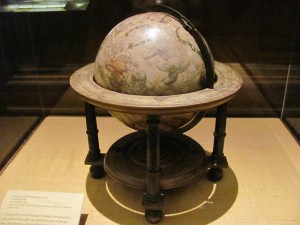 Here’s a few bars out of the song I’ll be singing tomorrow at CUNY.
Here’s a few bars out of the song I’ll be singing tomorrow at CUNY.
What was in premodern air? When writers looked at the empty space between their pens and their pages, what did they see?
This essay hazards its way into a poetics of nothing in the early modern imagination by seeking out in literary and scientific writings the stirrings of an invisible presence. I’ll fit air into three metaphoric containers: Global Winds, Embodied Breath, and Nothing. That’s not an exhaustive catalog of early modern images of this protean substance – more could be said about the airy nothings of the imagination, for example – but these three figures assemble an intertwined system. Global Winds press from outside, carrying ships and humans around the newly-circumnavigated world ocean. Embodied Breath rises up from within the body, exposing a lived experience of fragile inter-dependence and exchange. But even after these two forces reveal the power that winds and breath exert over human bodies, when we look at air, we still see Nothing. We all know what the old King says about nothing.
And a little more from the end of the intro —
Across these three sections I’ll weave brief engagements with the literary text that speaks more directly to my strain of ecocriticism than any other, King Lear. Shakespeare knew much less than Vossius about air-currents, pressure, and the interaction of seas and winds. But in part because of sheer familiarity – Shakespeare is in the air we breathe – and also because of this play’s obsessive engagement with human and nonhuman natures, I continue to mine King Lear’s harrowing vision of mortal bodies in hostile environments. An air-infused voyage through the play, touching on storms and last gasps and apocalyptic nothings, helps unpack the unsettling combination of power and fragility in early modern air. Poetic articulations, no less than scientific hypotheses, were drawn to airy nothings, and both types of writing found in that invisible space challenges and incitements to global and personal forms of order.
So: air is not history. It may be history’s opposite, sheer unintegrated force, roaring through our planet and our bodies. Power we can’t see but must take into account. A palpable and present image of constant change. An emblem for the alterity that underlies a post-sustainability ecology.
This looks great, Steve; can hardly wait for the essay.
I always think of wind as invisible causation, since only its effects are seen, and it has to be postulated backwards from them. Kind of like divinities, and thus the relation between breath, life and gods …